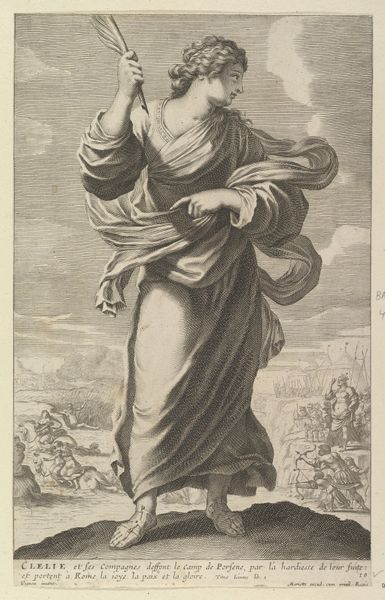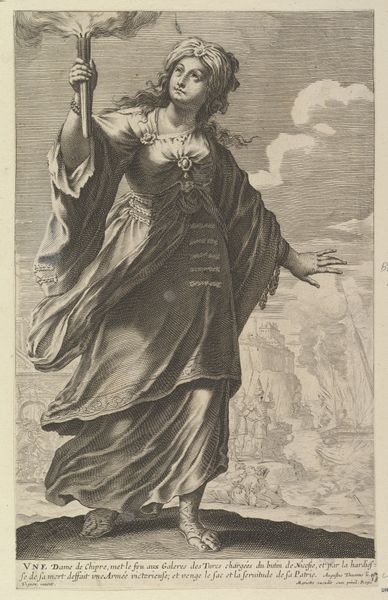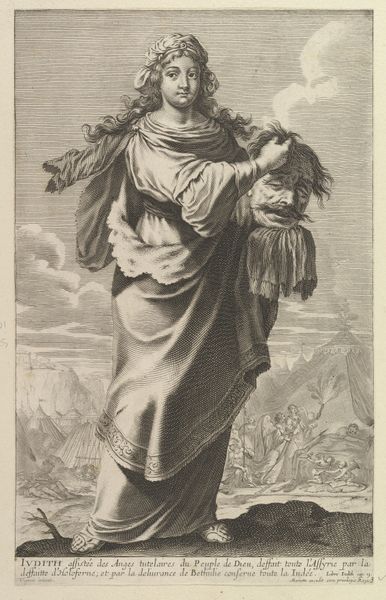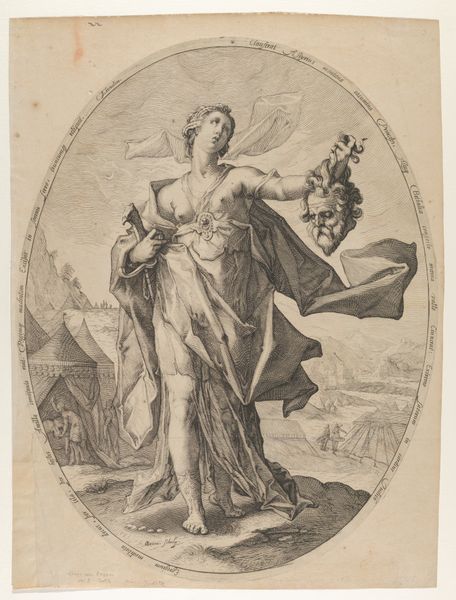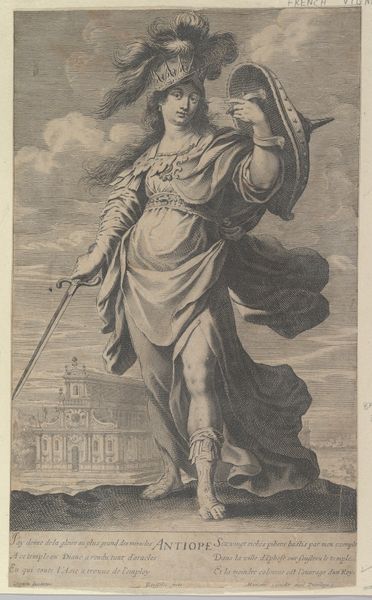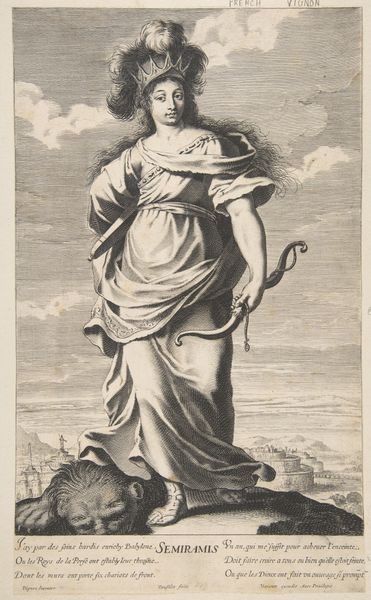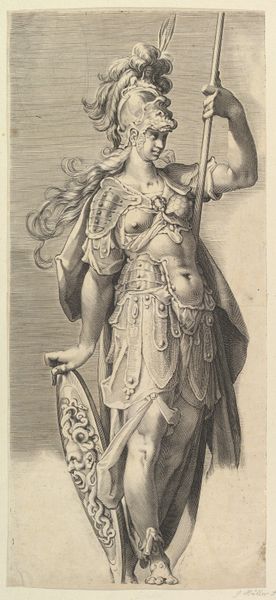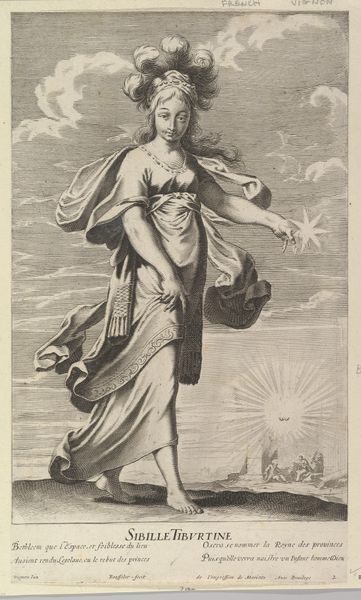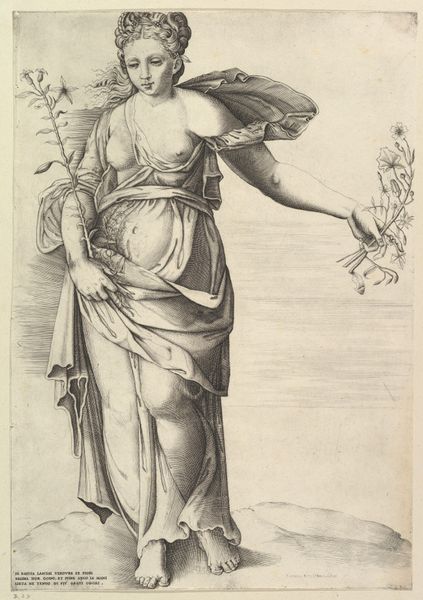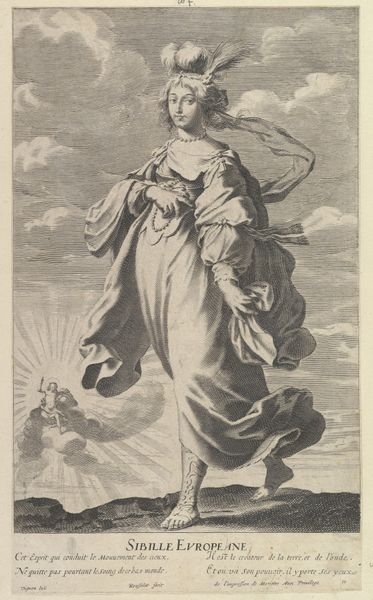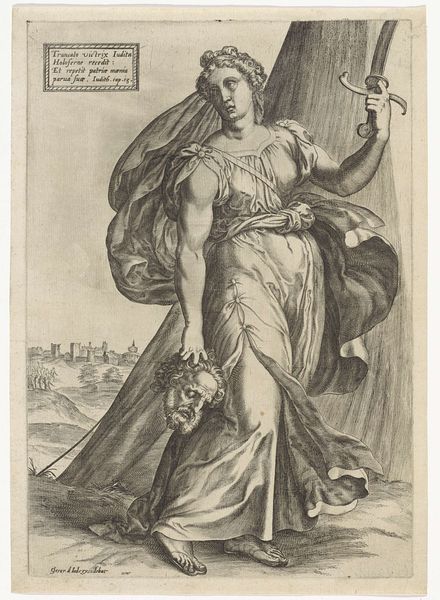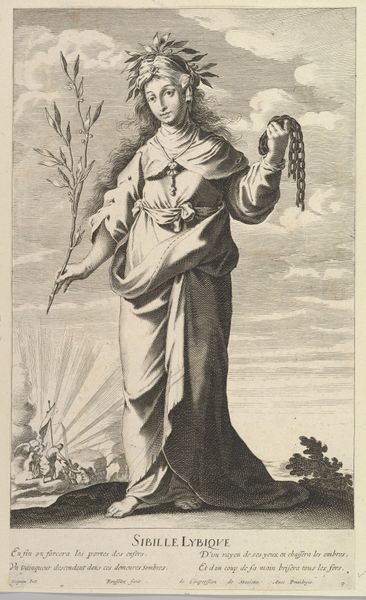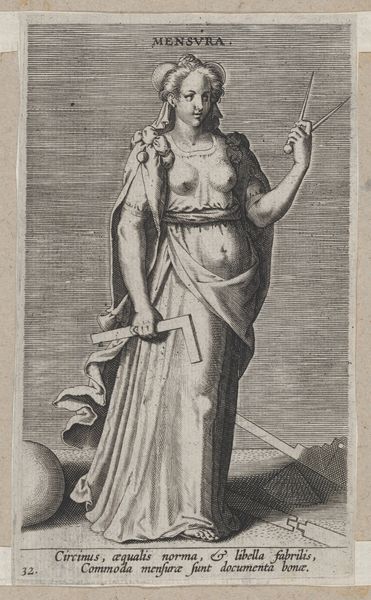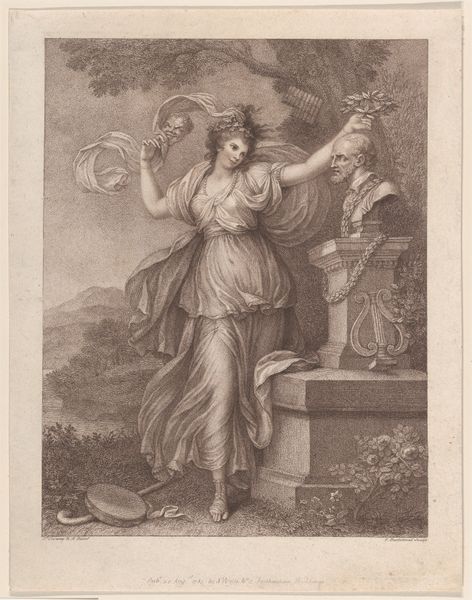
drawing, print, engraving
#
drawing
#
allegory
#
baroque
# print
#
figuration
#
history-painting
#
nude
#
engraving
Dimensions: sheet: 13 5/16 x 8 1/4 in. (33.8 x 21 cm)
Copyright: Public Domain
Gilles Rousselet created "Lucrèce" with engraving on laid paper in the 17th century. The composition centres on the figure of Lucretia, her body elongated and draped in classical robes that cascade to the floor in dynamic folds. Observe how the stark lines create a sense of depth and movement, yet the absence of color flattens the image, pushing it toward abstraction. Her raised hand and piercing gaze direct our attention upward, while the dagger in her other hand points to a narrative of defiance and tragedy. This structured presentation invites us to consider the semiotics of the piece: the dagger as a symbol of resistance, the classical garb as a signifier of virtue, and the overall composition as a stage for moral and political drama. Through this, Rousselet destabilizes the traditional representation of women, presenting Lucretia not just as a victim but as an active agent reclaiming her honor. The formal tension between line and form, depth and flatness, encourages ongoing dialogue and interpretation, embedding "Lucrece" within a broader discourse on representation, agency, and power.
Comments
No comments
Be the first to comment and join the conversation on the ultimate creative platform.
